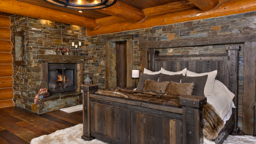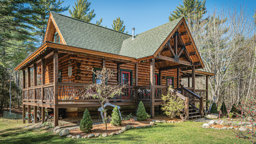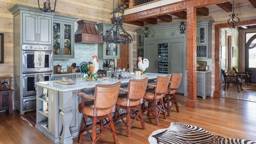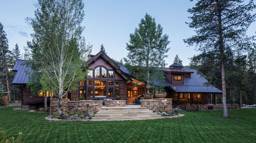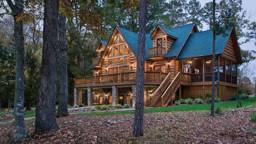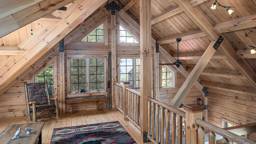Open layouts are a popular feature of log homes. These layouts are a challenge for people who have little or no experience with them. Here are some tips to make the most of your open layout.
Start With a Smart Design
Readers of a certain age — or anyone who relishes vintage television shows — will recall the sight of the star of "The Dick Van Dyke Show" tripping over his living room ottoman during the opening credits. It is priceless comedy but, from an interior design standpoint, a fatal flow flaw: an otherwise spacious room sabotaged. Unless you plan to install a camera and start streaming your own domestic hilarity, you'll likely want to avoid similar faux pas that surprise and pester many a new log-home owner. That includes people who thought they had planned out the floor plan and furnishings placement to perfection. Ah, but those log home plans are often done strictly two-dimensionally, and therein lies the first flow flaw. Remember, you will be living three-dimensionally.
Even if you are not prepared to create a 3-D plan in advance, you still need to measure the vertical heights of everything from the walls to the cabinetry to the sofa to, yes, the footstool. When you begin to live within the space and introduce it to your family and visitors, the word "flow" is going to apply to far more than just moving from space to space. Flow encompasses everything that you see, vertically as well as horizontally. Planning the basic floor plan is actually the easiest part. A wall here, one removed there, doorways, archways, windows — all are fun elements that define the living environment. But even in the most spacious and open plans, it becomes necessary to combine The Box with The Stuff That Goes Inside the Box. And that can be tricky because even in large rooms, you're likely to create groupings that define use of the space.
Now you have to walk around furniture — watch that footstool — and understand that interrupting the open layout may turn out to be a bigger flaw in your plan than a wall would have been.
Furniture and Other Interior Elements
Many planners tell you to position your largest furniture pieces on your layout first, but really, you will be better served by figuring out the room's use and the likely traffic patterns through it. That assessment may result in moving a large piece elsewhere (or discarding it altogether), but it will also save many extra steps and banged shins in the future. If guests are going to be going from conversational groupings to the powder room, make the journey pleasantly easy. If midnight snacks are your guilty pleasure, ensure that the route to the refrigerator avoids stubbed toes.
If you get restless while using the home office, be certain that you've got a comfortable circuit that calms or stimulates you as needed. Large pieces of furniture do not have to be lined up against a wall. For example, an over-stuffed sofa in the middle of a huge room can break up the space, especially when paired with a useful sofa table. You might question placing an antique cabinet away from the wall, but if the back side isn't finished, draping an afghan or quilt over the back can add more character, as well as filling up some vertical space.
Consider the Flow
Position vertical pieces to draw the eye upward to interesting architectural elements, such as clerestory windows, hand-hewn beams, lofts and interesting wall-hangings or decorations. That is as much a part of your home's flow as anything that directs traffic on the floor. In rooms with multiple purposes, although you will want to define the space, also keep in mind that during parties or larger family gatherings, you may want to move pieces around to create a single large space again.
Plan your room's flow to accommodate that adjustment without it looking like your furnishings and accents have just been shoved out of the way. It is still possible to have items placed within the space and away from the walls if you give a little thought to rearrangement that doesn't impede movement. However you end up designing your home's layout and the furnishings that will be placed within it, always keep in mind that you want to encourage freedom of movement. Unless, of course, you're hosting a party, the entertainment hasn't been set yet — and Dick Van Dyke is on your guest list.




